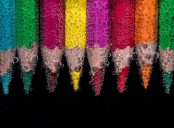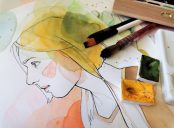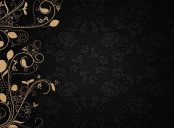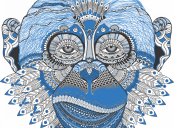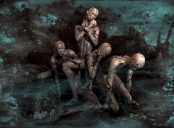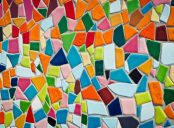Fredrik Östergren: Art Director and His Impact on the Industry

ARTIKEL
Fredrik Östergren is a highly accomplished and renowned art director who has made a significant impact on the artistic and creative world. With his immense talent and innovative thinking, Östergren has carved a niche for himself in the art industry and has become a household name among art enthusiasts. In this article, we will delve into the world of Fredrik Östergren and explore his contributions, the different types of art direction, and the historical significance of this dynamic field.
1. An Overview of Fredrik Östergren Art Director

Fredrik Östergren, born and raised in Sweden, began his artistic journey at a young age. His passion for art and design propelled him into pursuing a career in art direction. He has worked with numerous renowned companies, such as well-known fashion brands, advertising agencies, and international design studios. Östergren’s work is characterized by his unique ability to blend various artistic elements seamlessly, creating visually stunning and captivating pieces.
2. The World of Art Direction
Art direction is a multifaceted discipline that encompasses the visual aspect of various creative endeavors. It involves overseeing and curating the visual elements of a project, ensuring cohesiveness, and effectively conveying the desired message to the target audience. Within the realm of art direction, there are various types, including but not limited to:
– Advertising Art Direction
: This form of art direction focuses on creating impactful and persuasive visuals for advertising campaigns. Art directors in this field work closely with copywriters, photographers, and designers to bring brands’ messages to life.
– Film and Television Art Direction
: Art directors in this field are responsible for creating and supervising the visual aesthetics of films, television shows, and other visual media. They work closely with directors and production designers to ensure that the overall visual narrative aligns with the desired artistic vision.
– Graphic Design Art Direction
: This type of art direction revolves around overseeing the visual aspects of graphic design projects, including branding, packaging, and digital media. Art directors in this field collaborate with graphic designers and other creative professionals to ensure the final product effectively communicates the desired message.
3.
Quantitative Measurements of Fredrik Östergren’s Art Direction
Measuring the impact of art direction quantitatively can be challenging, as it often involves subjective aspects. However, one way to evaluate the success of an art director is through metrics like client satisfaction, industry recognition, and the success of campaigns or projects they have worked on. Fredrik Östergren has garnered numerous awards and accolades throughout his career, which serve as a testament to his exceptional skills and talent.
4. Exploring the
Differences Among Art Directors
Although art directors share a common goal of effective visual communication, each individual brings their unique perspectives and styles to their work. Fredrik Östergren’s approach to art direction is known for its seamless integration of various artistic elements. He combines traditional and contemporary techniques to create visually striking and conceptually rich pieces. Other art directors may focus on different aspects such as minimalism, realism, or experimental techniques, which results in distinct visual styles and approaches.
5. Historical Overview of the Advantages and Disadvantages of Various Art Directions
Art direction has come a long way throughout history, with different styles and approaches gaining popularity in different periods. Traditional art direction aimed to achieve realism and technical precision, while modern art direction embraced innovation and experimentation. Each approach has its advantages and disadvantages. For instance, traditional art direction allows for precise and accurate representation but may limit artistic freedom. On the other hand, modern art direction promotes creativity and unconventional thinking, but it may be perceived as less relatable or understandable.
In conclusion, Fredrik Östergren’s contributions as an art director have had a profound impact on the art industry, and his innovative approach continues to inspire and influence aspiring artists. Through his seamless integration of various artistic elements, he has created visually stunning and captivating pieces throughout his career. Art direction as a field encompasses various types, each requiring a unique set of skills and approaches. The historical evolution of art direction provides valuable insights into the advantages and disadvantages of different styles. Fredrik Östergren is a prime example of an art director who has successfully bridged the gap between tradition and innovation, leaving an indelible mark on the industry.
Types of Art Direction
– Advertising Art Direction
– Film and Television Art Direction
– Graphic Design Art Direction
Quantitative Measurements of Fredrik Östergren’s Art Direction
– Client satisfaction
– Industry recognition
– Success of projects
Differences Among Art Directors
– Unique perspectives and styles
– Integration of various artistic elements
Historical Advantages and Disadvantages of Various Art Directions
– Traditional Art Direction
– Modern Art Direction

